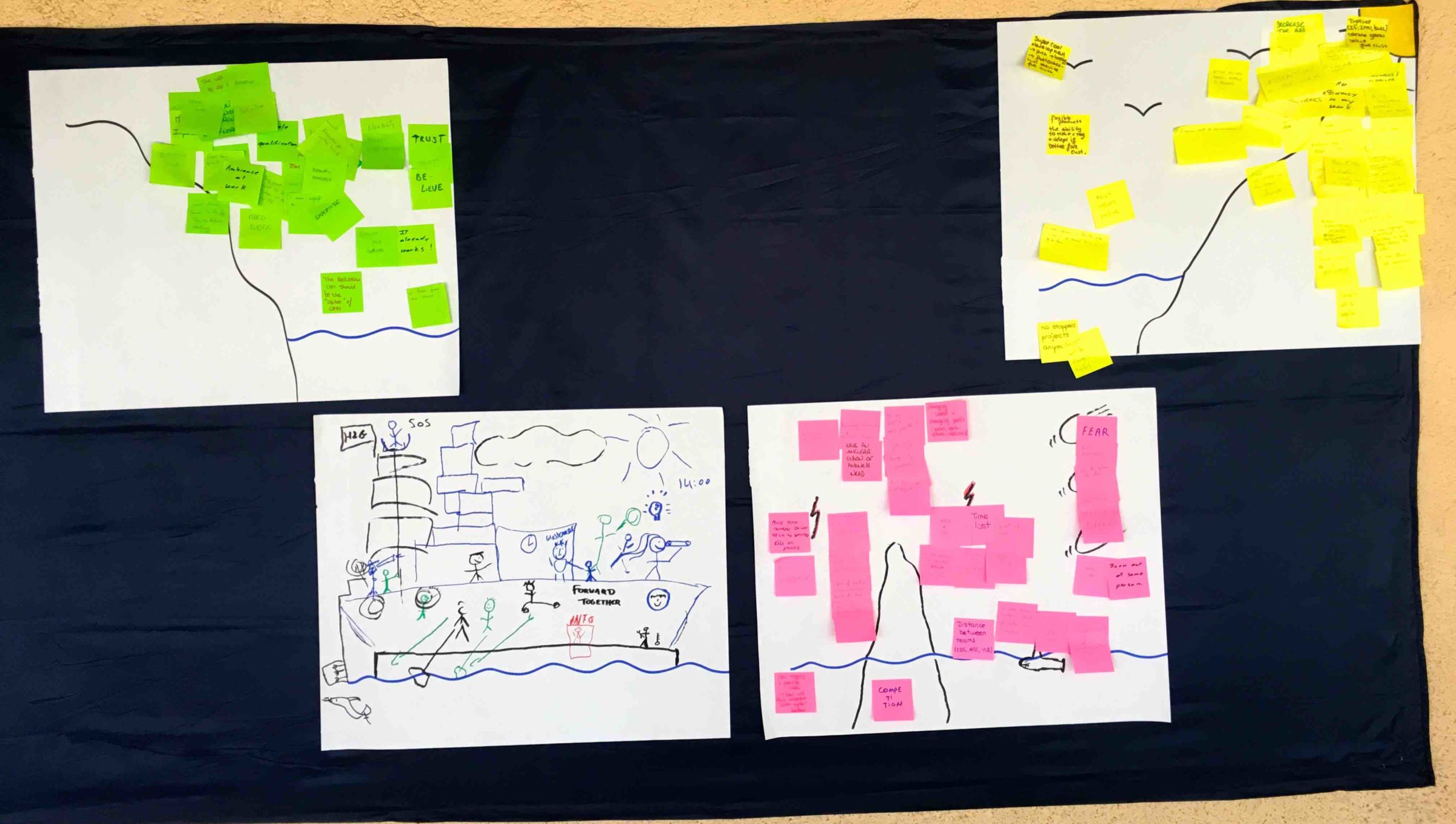
Je reviens sur ma journée d’alignement d’équipe dans laquelle j’avais décidé d’effectuer un Speed Boat – un atelier métaphorique bien connu dans la communauté – qui est à la fois efficace et généralement plutôt fun pour les participants. Ayant découvert « Le Voyage du héros », un outil de coaching métaphorique également, je me suis tenté à l’expérience de combiner les deux pour apporter plus de poids au Story Telling et ainsi à la projection de l’équipe dans son aventure. En voici un retour ! 🙂
Qui êtes-vous, héros ?
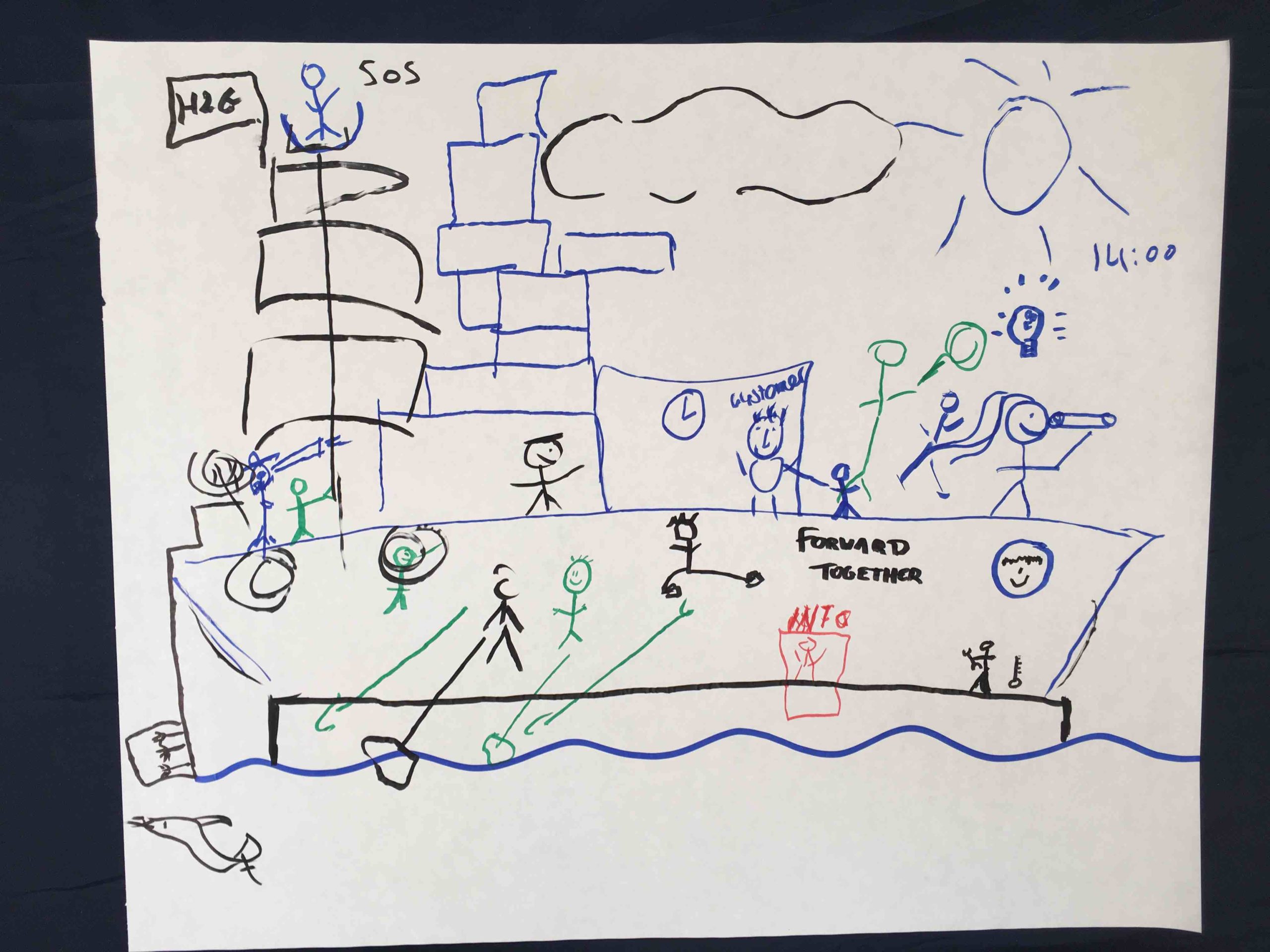
La première étape du Speed Boat est d’embarquer l’équipage sur le bateau pour débuter la métaphore. Certaines personnes commencent avec un bateau déjà dessiné et ne lui portent pas forcément beaucoup d’attention. Dans mon cas, au contraire, je trouvais cela nécessaire de lui donner une caractéristique identitaire et spécifique pour pouvoir mieux transporter les participants.
J’ai alors dessiné sur une feuille de Paperboard vierge à l’horizontale, une simple ligne bleue symbolisant de l’eau puis j’ai commencé :
Vous avez embarqué sur un bateau pour vivre une nouvelle aventure tous ensemble. Vous formez alors un nouvel équipage… mais d’ailleurs qui êtes-vous ? A quoi ressemble votre bateau ? Où vous trouvez-vous ? Que faites-vous ?
Sans surprise, le premier pas était le plus difficile. J’ai alors proposé de dessiner une première plateforme sur l’eau (ressemblant à un rectangle noir) qui étonnamment a permis de lancer la machine.
L’intérêt de mon côté est d’observer deux choses :
- Où est-ce que chacun se positionne (position hiérarchique ?)
- Comment chacun se représente (rôle ou responsabilité particulière ?)
Enfin, pour renforcer l’aspect identitaire de la représentation, je demande :
Quel est le nom de votre bateau ?
Après quelques échanges, un nom est apposé sur la coque de leur embarcation. Il est placé à l’avant du bateau et semble donner le ton sur la dynamique d’équipe.
Que souhaitez-vous être fiers d’atteindre ?
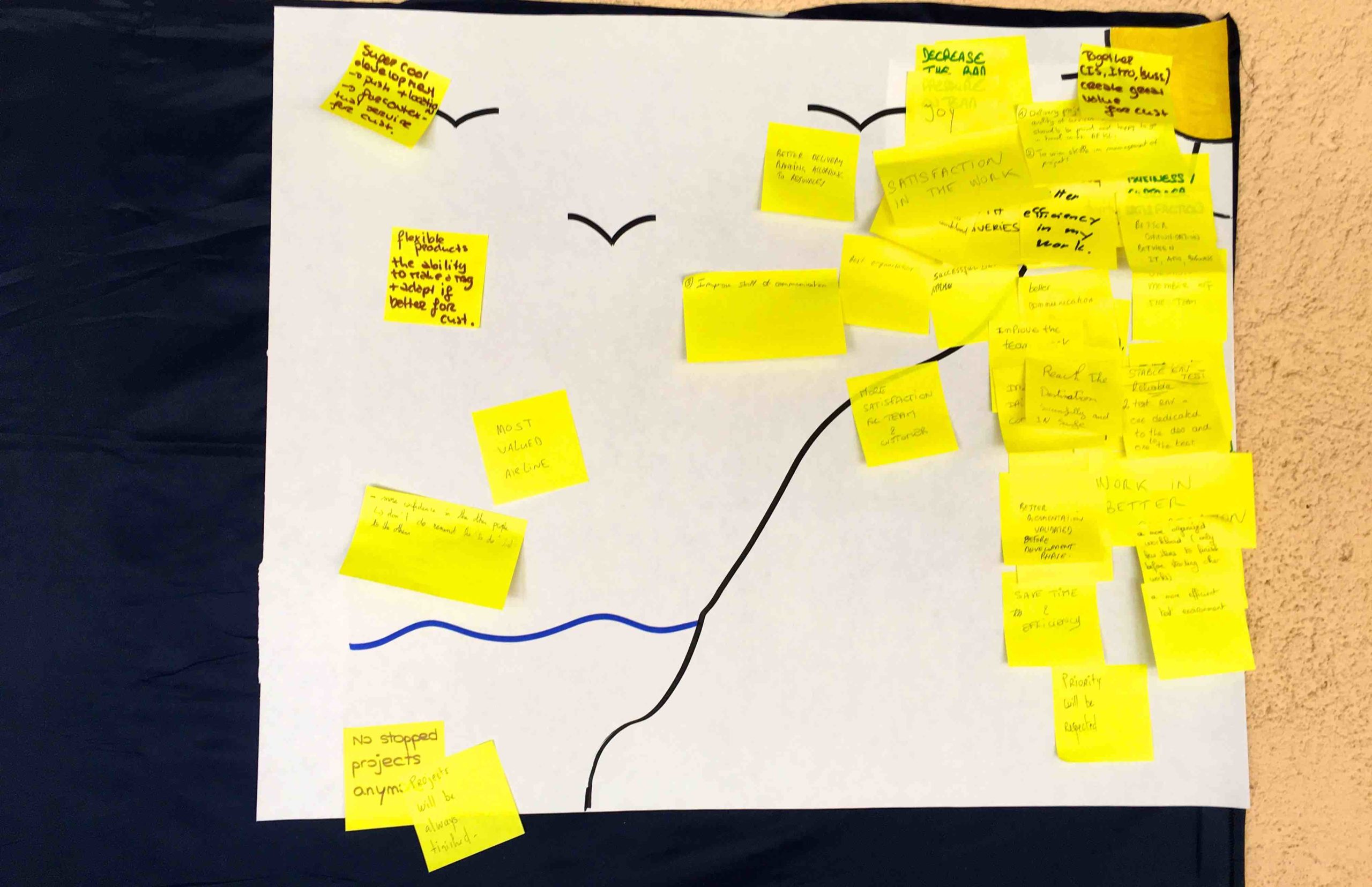
Maintenant que l’équipe s’est matérialisée en tant qu’équipage, il était temps de voir s’ils étaient alignés sur leurs objectifs et motivations.
Vous traversez l’océan en regardant droit devant vous dans l’espoir d’atteindre cette île ensoleillée, sur laquelle se cachent ces trésors que vous recherchez. Quelle est cette destination que vous souhaitez atteindre ? Quels sont ces trésors que vous souhaitez obtenir ?
Je propose à chacun d’émettre entre 1 et 3 Post-its représentant ce qu’il ou elle souhaiterait atteindre. 1 minimum pour pousser à la réflexion, 3 pour limiter le nombre de résultats : en effet, l’objectif n’est pas d’aller dans les détails mais plutôt de voir la distribution des différentes idées.
Ainsi, après quelques minutes de réflexion individuelle, chacun vient placer son résultat sur le poster. Je les invite alors à partager le contenu de leurs Post-its et de les regrouper lorsqu’ils correspondent à la même idée ou à une idée proche. On peut alors voir que l’équipe est plutôt alignée sur ses objectifs en voyant le gros bloc d’idées similaires.
Avec quelles ressources partez-vous ?
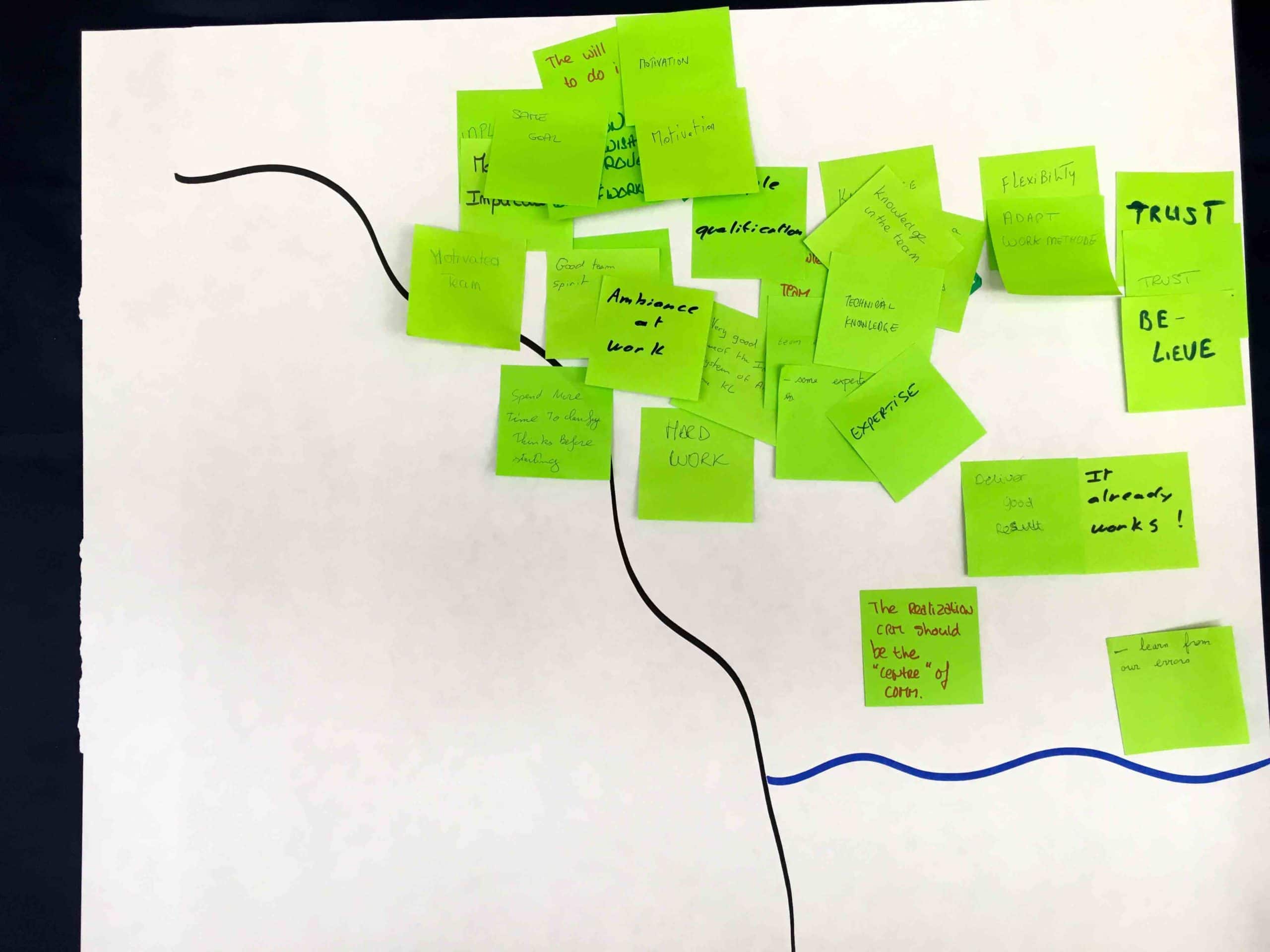
Après la destination, j’apprécie parler des bonnes choses et donc des forces de l’équipe.
Vous êtes partis de la terre ferme en quête de cette destination. Avec quelles ressources êtes-vous partis ? Quels sont ces vents porteurs qui vous aident à avancer vers votre objectif ?
Même format d’expression que précédemment. On peut également voir que l’équipe semble plutôt alignée sur ses motivations et ses ressources pour aller de l’avant ce qui me paraît bon signe pour la suite.
Quels sont les risques que vous pressentez ?
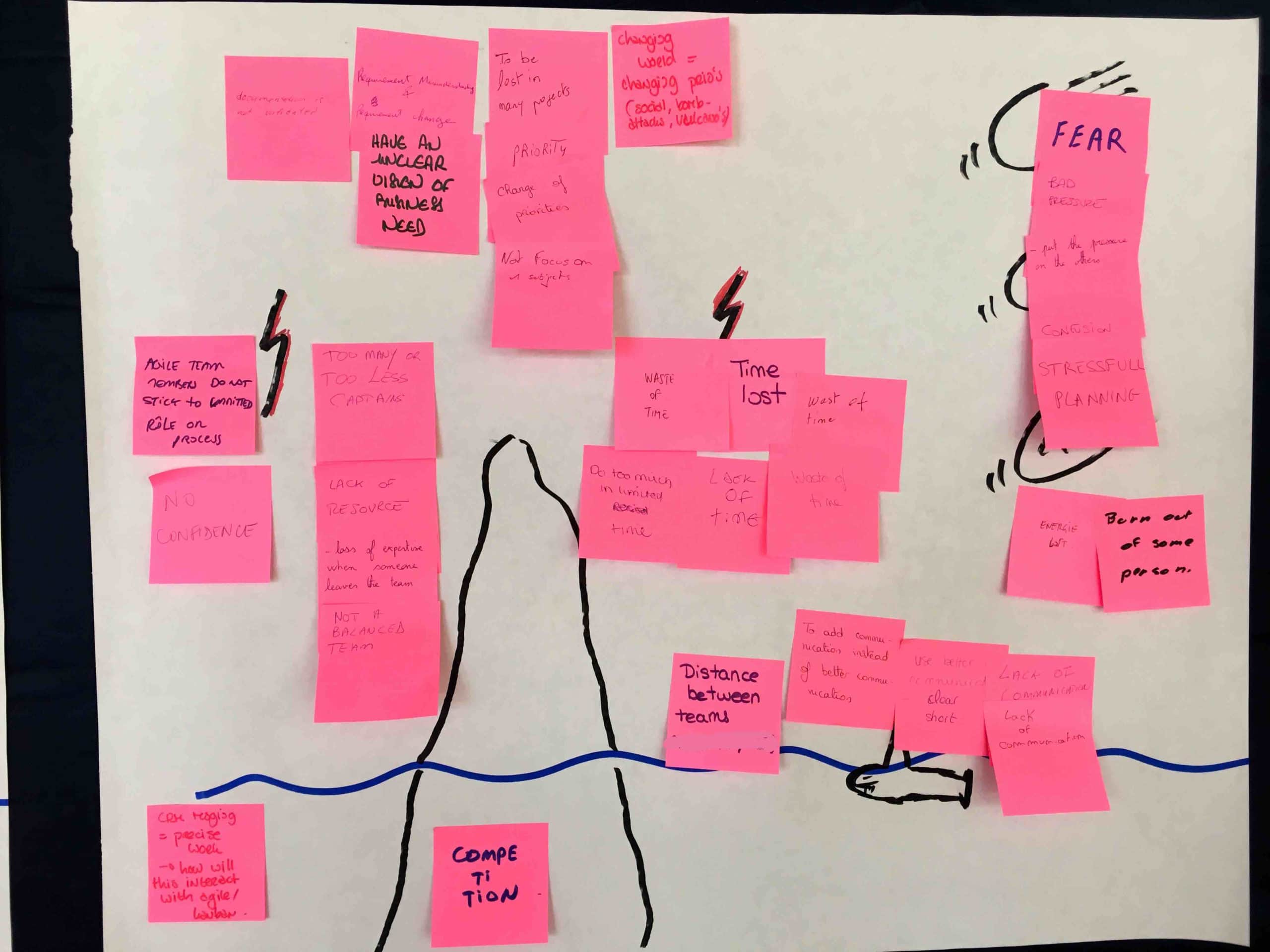
Enfin, après avoir défini les éléments de destination, les ressources avec lesquelles l’équipe est partie à l’aventure, il était temps d’énoncer les risques que chacun pressentait pour ainsi pouvoir mieux les anticiper.
Sur votre chemin, vous savez que l’imprévisible peut vous surprendre et endommager la coque de votre bateau voire même blesser votre équipage. Quelles sont ces tempêtes qui pourraient arracher vos voiles ? Ces icebergs qui pourraient endommager votre coque ? Ces requins qui pourraient menacer votre équipage ?
Comme le dit l’adage : « Jamais deux sans trois », même processus pour cette partie. On voit alors que les risques sont plus partagés ce qui peut paraître cohérent dans le sens où différents métiers sont représentés et donc différemment impactés. Cependant, des regroupements émergent tout de même et seront des sujets à bien garder en tête dans le cadre de l’accompagnement.
Conclusion
Pour les connaisseurs de l’atelier, vous me reprendrez probablement en me disant : « Mais tu as oublié une étape non ? Où se trouvent les ancres qui ralentissent le bateau ? », et vous auriez raison. Il s’avère simplement que j’ai effectué un Consensus Workshop sur les sources d’insatisfactions et de frustrations de l’équipe juste avant, pour pouvoir faire émerger les besoins de l’équipe et donner du sens à leur démarche de transformation. Ainsi, j’ai volontairement sauté l’étape des ancres qui selon moi auraient fait doublon.
J’ai pour ma part beaucoup aimé animer cet atelier de cette façon. Le fait de ne pas tout centraliser sur un seul Poster pousse les participants à se déplacer, ce qui pour moi est un atout supplémentaire de focalisation. Maintenant, le Story Telling reste quelque chose que je dois encore pratiquer mais sa puissance n’est aujourd’hui plus à prouver.
Et vous, comment animez-vous votre Speed Boat ? 🙂






